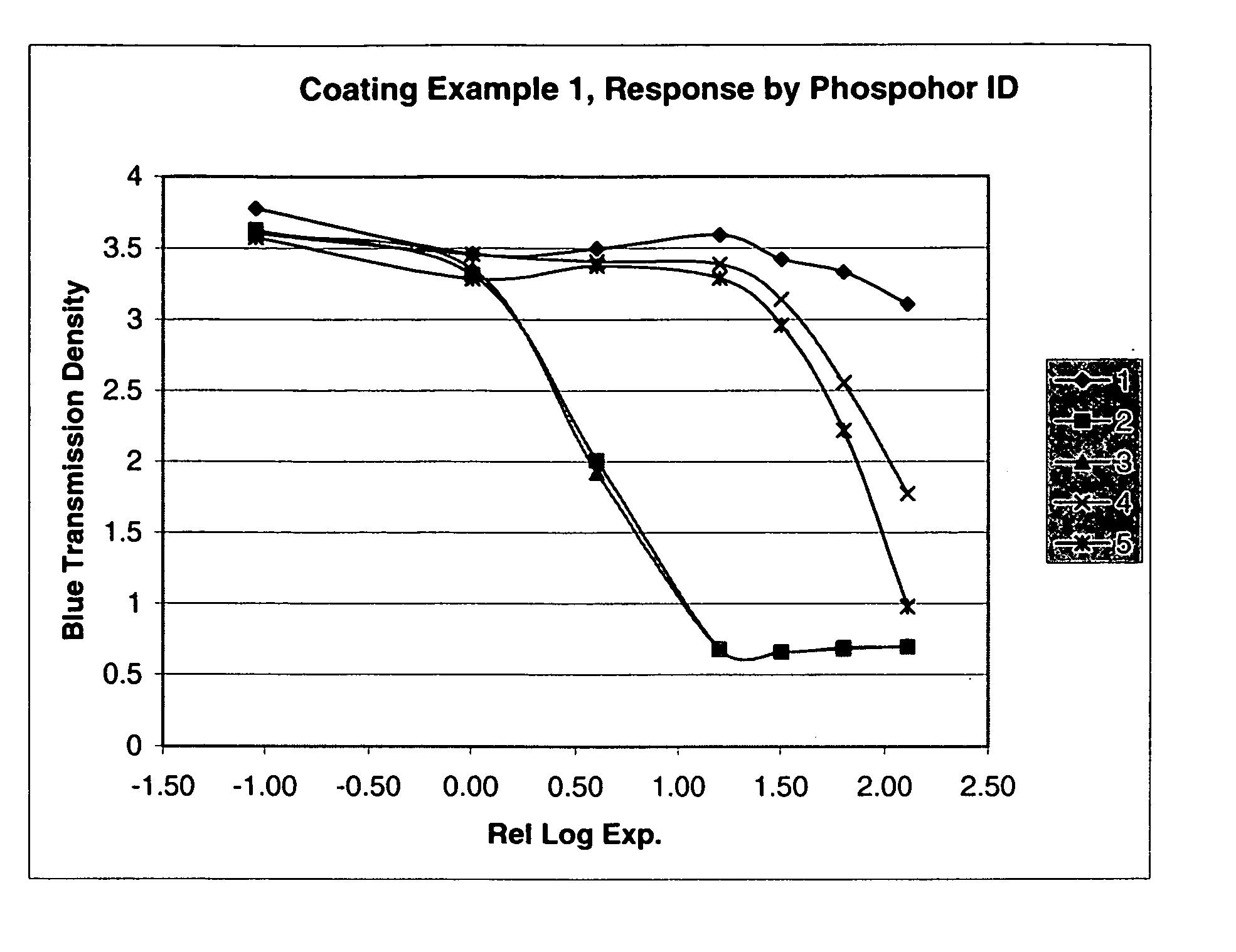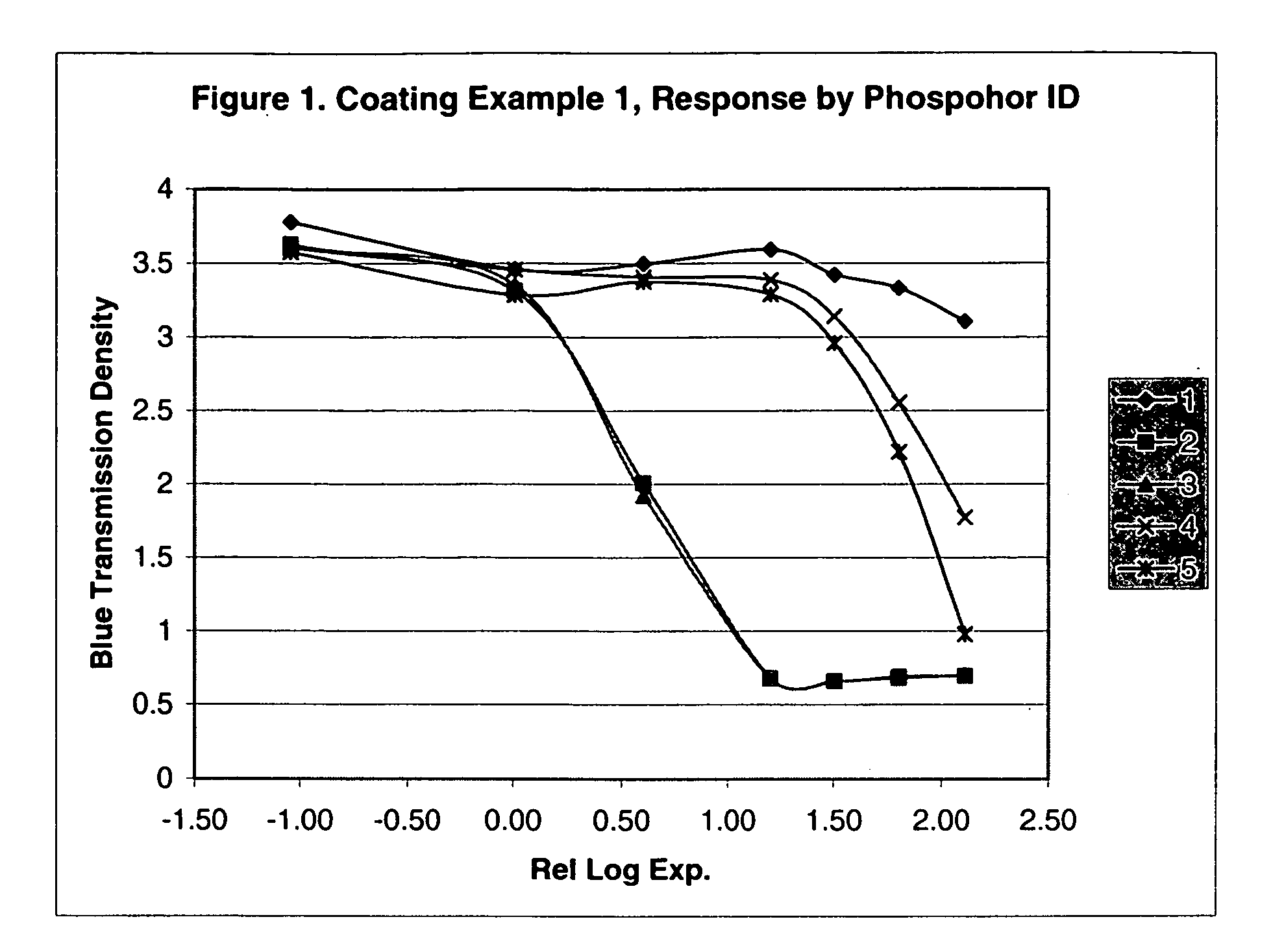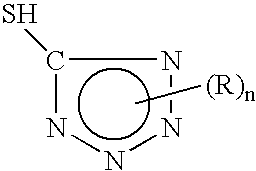High speed positive-working photothermographic radiographic film
a radiographic film and positive-working technology, applied in the direction of diffusion transfer process, instruments, photosensitive materials, etc., can solve the problems of image noise, undevelopable grains, image noise, etc., and achieve excellent thermal and light stability, high speed and discrimination, and high speed
- Summary
- Abstract
- Description
- Claims
- Application Information
AI Technical Summary
Benefits of technology
Problems solved by technology
Method used
Image
Examples
example 1
[0217] The following aqueous multilayer coating, in Table 2, was prepared using negative-working emulsion E-2 according to methods known in the art. The support was 0.018 cm (0.007 inch) thick poly(ethylene terephthalate).
TABLE 2Componentg / m2Layer 1: InterlayerGelatinEthene, 1,1′-0.14(methylenebis(sulfonyl))bis-Layer 2: Imaging LayerPan-Sensitive Silver (from.54emulsion E-2)Silver (from silver salt SS-1)1.08Silver (from silver salt SS-2)1.08Phenolic Coupler PC-4 (from1.08PCD-5)Developer D-17 (from DD-1)1.08Salicylanilide (from TSD-1)2.16Gelatin6.88Layer 3: OvercoatGelatin3.23Surfactant SF-10.01Ludox ® AM (colloidal silica)0.15
example 2
[0218] Example 2 illustrates the sensitivity of coating Example 1 when combined with several phosphor intensifying screens. Coating Example 1 was placed in face-side contact with each screen and the combined film packet was exposed to x-ray radiation with the backside of the intensifying screen facing the x-ray source. The x-ray exposures ranged from 0.09 mRems to 128.8 mRems. Table 3 below lists the peak wavelength emitted by each screen, Table 4 shows the x-ray source settings for each exposure level, and Table 5 lists, for each exposure level, the developed blue transmission density after thermally processing coating Example 1 at 162° C. for 30 sec. FIG. 1 shows the H & D photographic curve (developed blue transmission density vs relative log exposure level) which has a decreasing slope indicating a positive response (decreasing density with increasing exposure).
TABLE 3Phosphor ID12345DescriptionLaPO4:CeXOMATICDupontLaPO4:Gd2O2S:REGHI PLUSCe, TbEuCoverage60 g / m{circumflex over ...
example 3
[0222] The following aqueous single layer coating shown in Table 6 was prepared using negative working emulsion E-1 and silver salt SS-3. The support was 0.018 cm (0.007 inch) thick poly(ethylene terephthalate).
TABLE 6Componentg / m2Layer 1: Imaging LayerGreen Sensitive Silver (from emulsion E-1)0.46Silver (from silver salt SS-3)0.46Phenolic Coupler PC-4 (from PCD-3)1.12Developer D-17 (from DD-1)0.34Salicylanilide (from TSD-1)0.86Gelatin3.77
PUM
| Property | Measurement | Unit |
|---|---|---|
| light wavelengths | aaaaa | aaaaa |
| temperature | aaaaa | aaaaa |
| temperatures | aaaaa | aaaaa |
Abstract
Description
Claims
Application Information
 Login to View More
Login to View More - R&D
- Intellectual Property
- Life Sciences
- Materials
- Tech Scout
- Unparalleled Data Quality
- Higher Quality Content
- 60% Fewer Hallucinations
Browse by: Latest US Patents, China's latest patents, Technical Efficacy Thesaurus, Application Domain, Technology Topic, Popular Technical Reports.
© 2025 PatSnap. All rights reserved.Legal|Privacy policy|Modern Slavery Act Transparency Statement|Sitemap|About US| Contact US: help@patsnap.com



